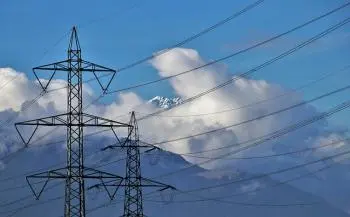
High voltage cables are electrical conductors designed to transport large amounts of electrical energy over long distances efficiently. These cables operate at higher voltages than those used in conventional distribution systems, generally above 1000 volts.
Its main function is the transmission of electricity from generating plants to distribution centers and final consumers.
There are different types of high voltage cables, including overhead cables suspended on poles, underground cables and submarine cables used for interconnection between regions.
Conductive materials
The most common conductive materials are:
- Copper : It is one of the most used conductors in high voltage cables. Copper is an excellent electrical conductor and has a higher electrical conductivity than many other metals. However, copper can be expensive, and its use may depend on economic considerations.
- Aluminum : Aluminum is another conductive material widely used in high voltage cables. Although it has slightly lower electrical conductivity than copper, it is lighter and generally cheaper. Its use is common in long-distance electrical power transmission cables.
- Aluminum Alloys : Specific aluminum alloys have been developed to further improve its conductive properties and mechanical strength. These alloys are often used in high voltage cables to optimize performance.
- Aluminum-coated steel : In some cables, especially ground cables, aluminum-coated steel is used to provide additional mechanical strength. This type of cable combines the conduction properties of aluminum with the strength of steel.
- Aluminum-zinc alloys : Some high-tension cables may be made of aluminum-zinc alloys to improve corrosion resistance and reduce cable weight.
Advantages of high voltage electric transmission
High voltage electrical transmission presents significant advantages, two of the most notable being the reduction of energy losses and efficiency in transmission over long distances.
Firstly, by raising the voltage, in accordance with Joule's law, the energy losses in the form of heat in the conductors decrease considerably. This is because by increasing the voltage and reducing the current, electrical resistance is minimized, thus optimizing system efficiency.
Second, long-distance transmission efficiency is essential for effective energy management. The ability to efficiently transport electricity over high-voltage cables makes it possible to transmit power generated in remote locations, such as wind farms or solar plants, to distant demand centers.
Evolution of high voltage cables
In their early stages, power lines were mainly overhead wires, which were suspended over poles to carry electricity over long distances. Although this approach was a significant advance of its time, it had limitations in terms of efficiency and energy loss due to resistance and limited load capacity.
Underground cables and improved insulation
Over time, engineers sought solutions to overcome the limitations of overhead cables.
Underground cables emerged, offering advantages in terms of aesthetics and safety, while reducing interference with the environment. Additionally, cable insulation was improved to minimize energy losses and ensure more efficient transmission.
Overcoming limitations: high voltage cables with HVDC technology
One of the most significant advances in recent years has been the adoption of high voltage direct current (HVDC) technology.
Unlike alternating current (AC) used in most transmission networks, HVDC offers advantages such as reduced power losses and the ability to transmit electricity over extremely long distances without large losses.
Innovative materials: Superconductors and nanotechnology
The search for more efficient and conductive materials has led to research into superconductors and the application of nanotechnology in the manufacture of high-voltage cables.